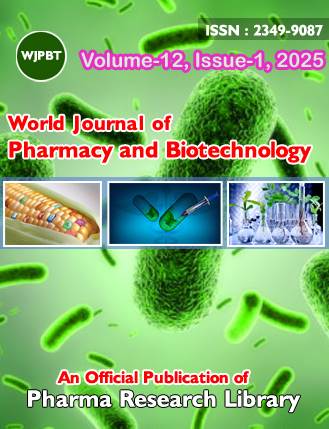A Study on Screening of Risk Factors Profile for Respiratory Infections in Pediatrics and Its Treatment Pattern in a Tertiary Care Hospital
DOI:
https://doi.org/10.30904/j.wjpbt.2025.4824Keywords:
Microorganisms, upper, lower respiratory infections, bacterial pathogens, immunization status, treatmentAbstract
Microorganisms gain entry to the respiratory tract by inhalation of droplets and invade the mucosa. Epithelial destruction may ensue, along with redness, edema, hemorrhage and sometimes an exudate. Initial symptoms of a cold are runny, stuffy nose and sneezing, usually without fever. Other upper respiratory infections may have fever. Children with epiglottitis may have difficulty in breathing, muffled speech, drooling and stridor. Children with serious laryngotracheitis (croup) may also have tachypnea, stridor and cyanosis. The prospective observational study was carried out for a period of 6 months. The study was conducted in Pediatrics department in a tertiary care hospital. The present study aimed to assess screening of risk factors profile for respiratory infections in pediatrics and its treatment pattern in a tertiary care hospital. Difficulty breathing clinical symptom patients were more 28(22.4%) as compared to other clinical symptoms 88-91. Private Medical Practitioner visited patients were more 51 (40.8%) as compared to other treatment centers. Tablet dosage form prescribed patients were more 93 (74.4%), as compared to syrup dosage form prescribed patients 32 (25.6%). Corticosteroids prescribed patients were more 45 (36%) as compared to other prescribed drugs for Respiratory infections. Study clearly highlighted the various types of clinical presentations, risk factors and different types of LRTI in children less than 5 years of age. Understanding a clear knowledge of the etiology and bacterial pathogens clearly provides guidance for the physician in management and clinical outcome. From the result of this study, we can conclude that there are some modifiable risk factors for LRTI like family history, past history, immunization status, and malnutrition. The risk factors can be tackled through effective health education of community, leading to a healthy society.
Downloads
Published
Issue
Section
License
Copyright (c) 2025 Author

This work is licensed under a Creative Commons Attribution-NonCommercial 4.0 International License.

